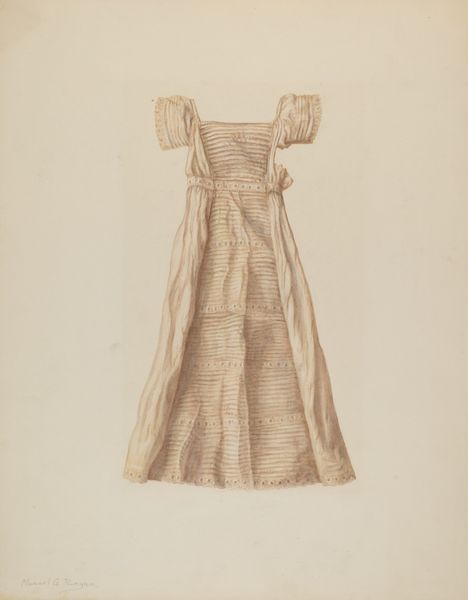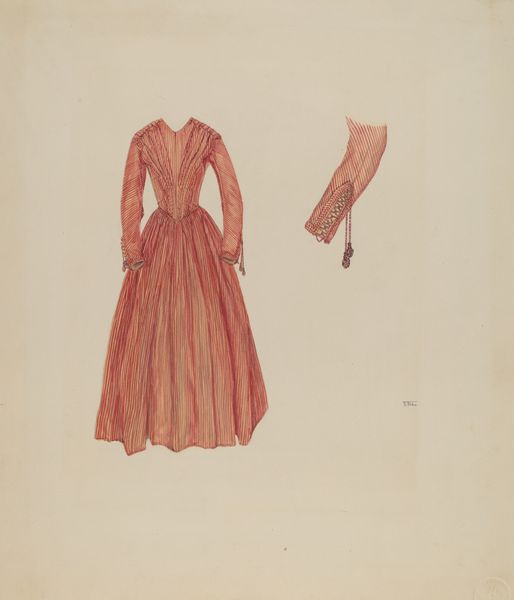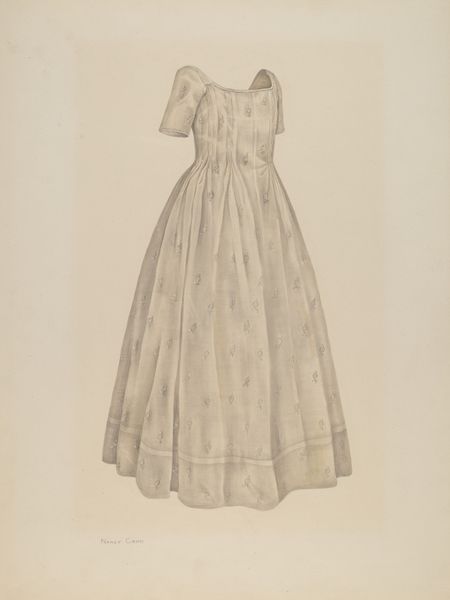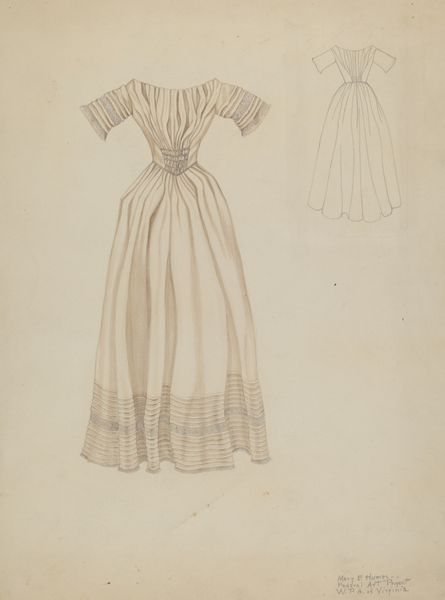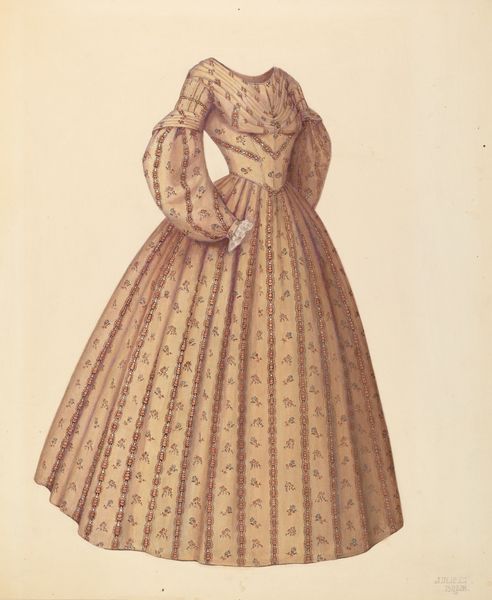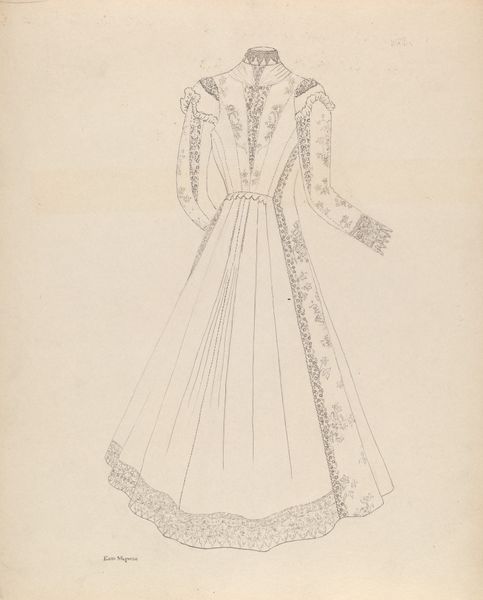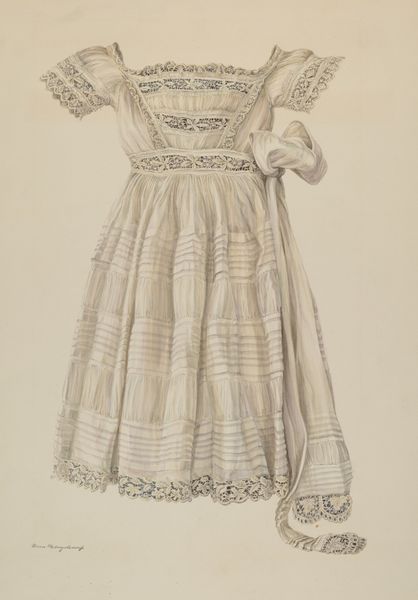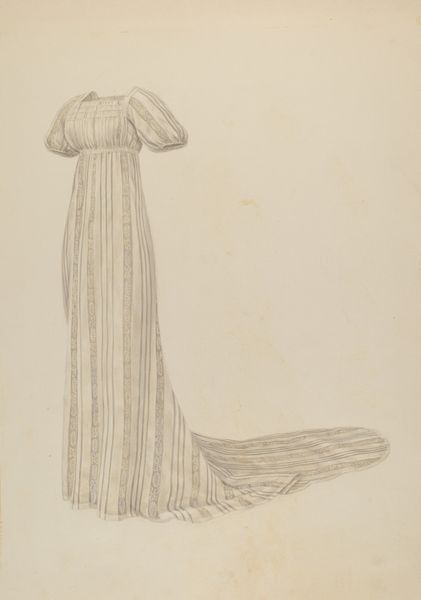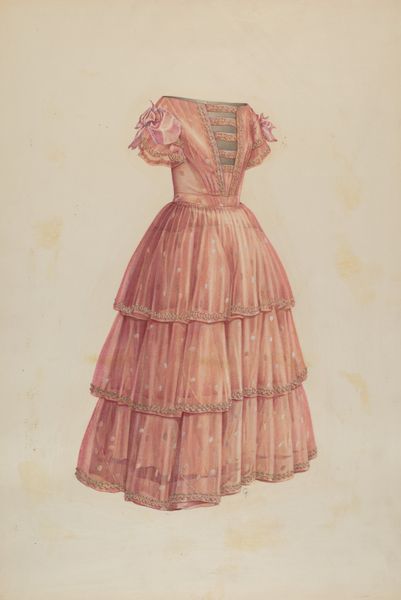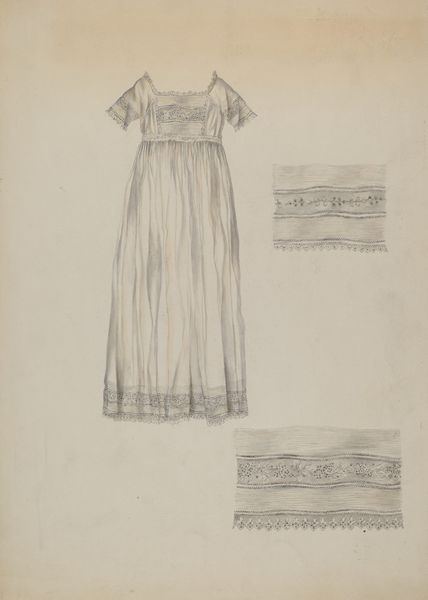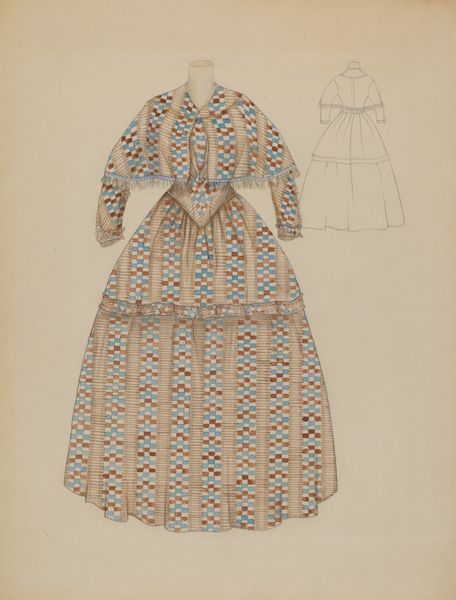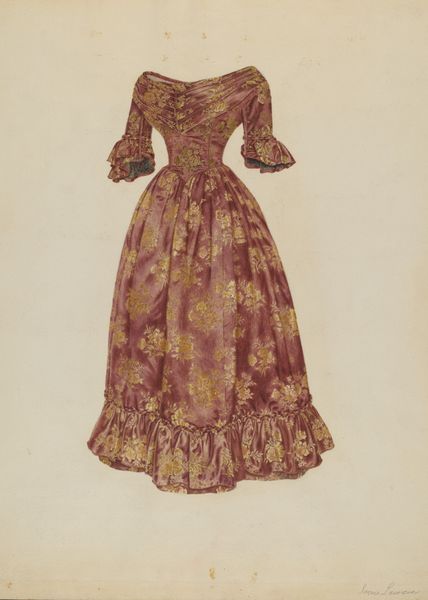
drawing
#
drawing
#
toned paper
#
light pencil work
#
pencil sketch
#
incomplete sketchy
#
study drawing
#
personal sketchbook
#
underpainting
#
fashion sketch
#
fantasy sketch
#
watercolor
Dimensions: overall: 36.8 x 26.5 cm (14 1/2 x 10 7/16 in.)
Copyright: National Gallery of Art: CC0 1.0
Editor: Here we have Ella Josephine Sterling's "Silk Dress," a drawing from around 1936, rendered with pencil and watercolor on toned paper. It feels very dreamlike, almost like a page torn from a personal sketchbook. I'm curious, looking at this piece through your historical lens, what stands out to you? Curator: The interesting thing about "Silk Dress" is how it blends the personal and the aspirational. Sterling, as an artist, is not just capturing an image but participating in the broader cultural discourse of fashion and femininity during the interwar period. We have this delicate sketch of a garment, possibly a design or a study, presented with a subtle elegance that mirrors the evolving role of women in society. What do you notice about its presentation alongside a detail of the fabric? Editor: The inclusion of the fabric detail on the side feels very practical, like a reference point. Was this meant for mass production, or do you see something more personal in this artwork? Curator: Precisely, that’s key to the socio-political undercurrents. Is it intended for personal creation, signifying domestic skills and individual expression, or for broader consumption within a burgeoning fashion industry? That the garment design, in particular, harkens back to earlier, more restrictive silhouettes contrasts with women entering public roles and more closely parallels their representation within the domestic sphere. It underscores how seemingly benign artistic pieces actively negotiated socio-economic narratives. Editor: So, even a simple fashion sketch like this can be read as part of a bigger conversation about women and their place in society? Curator: Exactly! Museums and galleries play a significant role in framing how we interpret such pieces, elevating what might have been a private study to a public symbol. We have the power to re-contextualize it to speak to modern dialogues about women's history and social progress. Editor: That gives me a fresh perspective on how even a seemingly simple piece like this can hold so much meaning. Thanks! Curator: And it's through that intersection of intention, representation, and reception that a piece truly comes alive and resonates throughout time.
Comments
No comments
Be the first to comment and join the conversation on the ultimate creative platform.
